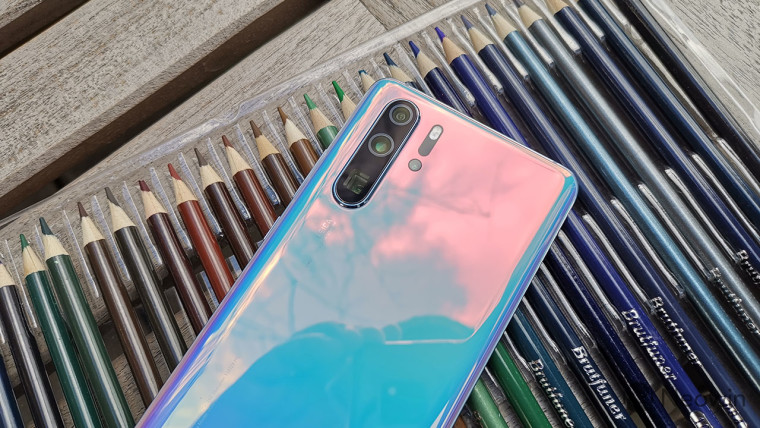
After about a month of leaks and teasers, Huawei finally announced its new flagship P30 and P30 Pro handsets at an event in Paris. And yes, they're everything that that were rumored to be and more.
Just as you'd expect, both handsets come with Huawei's in-house Kirin 980 chipset, which was also used in the Mate 20 Pro. It contains the company's next-generation Neural Processing Unit (NPU), which allows for the camera to see what it's looking at and make adjustments. It also improves battery life.

The camera is what's exciting though, as is always the case with the P-series. Both devices come with a three lenses, the main one being a 40-megapixel SuperSpectrum lens. While Huawei has used 40MP cameras since last year's P20 Pro (and later the Mate 20 Pro), this is the first time we've seen it in the non-Pro version.
The idea behind SuperSpectrum is that it's better for low light. Instead of red, green, and blue - which is what traditional cameras use - Huawei swapped out the green with yellow. The lens has an f/1.6 aperture and optical image stabilization (OIS), and of course it's certified by Leica. In fact, Huawei says these phones are co-engineered with Leica.

The other two lenses are wide-angle and optical zoom. While the P30 has 3x optical zoom now, the P30 Pro's zoom lens is an eight-megapixel f/3.4 5x zoom camera, which also has OIS. Combined with the 40-megapixel main sensor, the camera supports up to 10x hybrid zoom, and you can zoom in the camera up to 50x.
The wide-angle camera is 20 megapixels, and 16MP on the regular P30. It has an f/2.2 aperture, and it replaced the monochrome sensor that was on the P20 series. To be clear, the first time that Huawei went with this method was on the Mate 20 series. On top of that, there's a time-of-flight sensor on the back of the Pro, which is meant to measure depth.
Huawei says it has improved its image stabilization, for things like night mode and video. Low light performance is vastly improved, with ISO sensitivity jumping from 102,400 to 409,600.

The 6.47-inch P30 Pro display includes an in-display fingerprint sensor, which was also first found on the Mate 20 Pro. And yes, it supports wireless charging (the P20 Pro did not, and the P30 does not) for its 4,200mAh battery (the P30 battery is 3,650mAh), along with the company's reverse wireless charging feature. While you can use reverse wireless charging to charge another device, it only outputs at 2.5W.
Both displays are OLED with resolutions of 2,340x1,080, giving them a 19.5:9 aspect ratio, although the P30 is only 6.1 inches and it doesn't have the curved edges. Both devices are available with 6GB RAM and 128GB storage, and they're both offered with 8GB RAM, with 64GB, 128GB, and 256GB storage for the P30, and 128GB, 256GB, and 512GB storage for the P30 Pro.
Both the P30 and the P30 Pro will be available in Breathing Crystal, Pearl White, Aurora, and Black, and the P30 Pro will also come in Amber Sunrise.




















7 Comments - Add comment